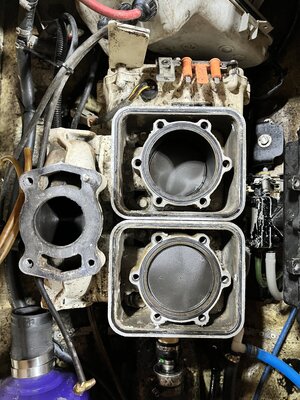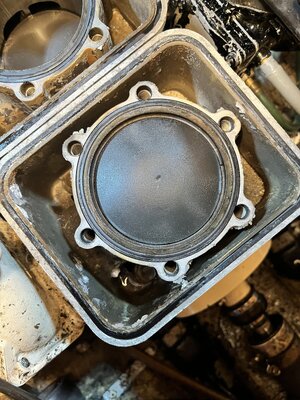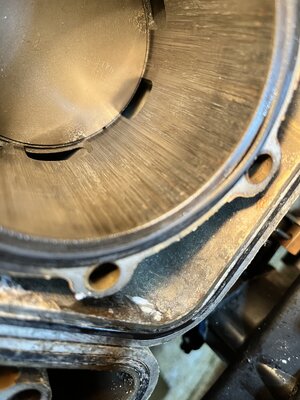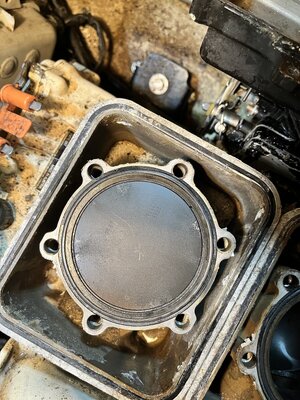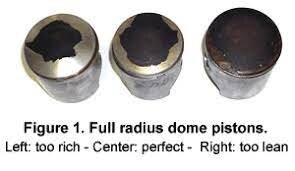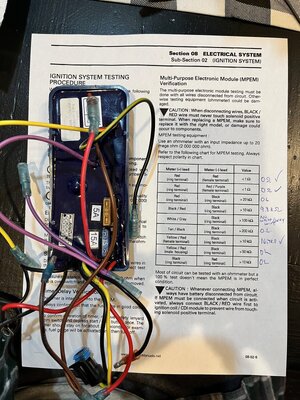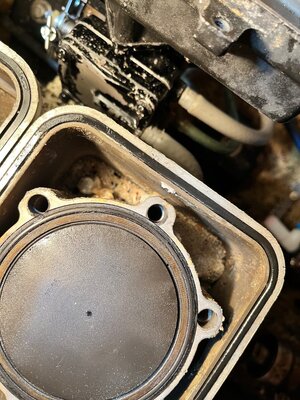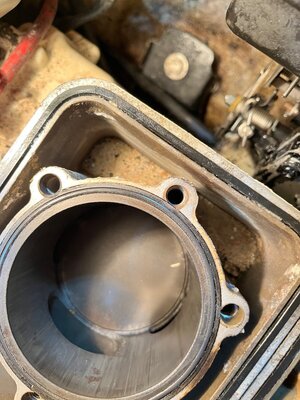From a different perspective....No Spark? un-screw the boots from the ends of the plug wires, snip off 1/4" of each wire, test the resistance of the boots (compare to specs) if good and reasonably equal, put some dielectric compound on the insulation of the plug wires and put the boots back on. Never crank the engine without the plug wires being grounded. This could damage the MPEM. Get new plugs, Check the gap, put wires on and using jumper cables (make sure they are good), clamp each plug in a cable and ground the other ends to bare clean metal (the base of the temp sensor in the head works well, and the neg batt post). cover the spark plug holes with a rag and check for spark in the shade or evening for better visibility. spark should be bright blue. Use anti-seize on the plug threads when installing.
Instead of jumping the start solenoid with a screwdriver, use a jumper wire from the battery to the small red/white wire on the solenoid, this will give an indication of a bad switch or bad wiring connection outside of the box if it cranks better, however, you don't energize the ignition coil just by jumping the starter, so you won't see any spark. the MPEM has a built in ignition module, and, (I think), the start button, with lanyard on, is the only way you're going to get it to fire. And, when these guys say check your oil lines, this is serious, and that means all of them, including the two larger oil hoses to and from the rotary valve shaft I even drain the oil tank, and clean it. You never know what someone has put in there, or what kind of oil they used, and its not a good idea to mix oils, so I drain the oil from the rotary valve shaft enclosure too, so I can start out fresh and clean, and especially do a close inspection of the tiny oil hoses from the pump to the rotary valve cover, and don't fail to calibrate the oil injection pump right after installiing the carb(s), its actually quite easy using a mirror. Those tiny oil hoses have little hose clamps and can be loosened with a pair of pliers, and new hoses put on then tighten the clamps with a pliers by pinching the ends. Your one bad cylinder obviously overheated, you will see a stuck ring or two on that piston, and what causes that? lack of injection oil mainly, but running the engine out of the water without a water hose connected will overheat one also. (Which reminds me... once its running, disconnect the wire from the temp sensor and ground it. Your buzzer should sound an alarm. This checks the circuitry and buzzer, but not the sensor. To check the overheat sensor it must be removed and placed in a pan of hot water with a thermometer. Use an ohmmeter. When it heats up, it grounds the wire, check the specs to find out at what temp this should happen) You must run it on premix until ALL air bubbles get purged out of the oil lines. Here's how I do it: At idle speed (pre-mix in a jug, siphon hose to carb) reach down and move that arm on the injection pump forward as far as possible, and watch the tiny oil hoses for air bubbles to get out. It will smoke a bit, but it don't take long to purge the air out this way, and don't fail to connect a water hose to keep it cool




